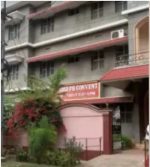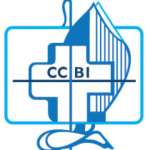First the milk part. There was a cauldron of fresh milk kept amidst a group of people. Seeing it lying unattended one of the bystanders siphoned off some in a bottle and took it home. A second bystander wanted to drink the milk, but he was rudely pushed aside by another; telling him that he was not entitled to it. In the ensuing melee yet another bystander surreptitiously slipped some poison into the milk, causing acute food poisoning, and the milk to split. Alarmed at these developments the leader of the group put his finger to his lips and sternly reprimanded everyone present to shut up and not utter a word about what was happening!
What is this all about? The cauldron of milk is a symbol of Indian society today, and the bystanders are the various stakeholders. They may, in some way or the other, be having an adverse impact on Indian society. The person who siphoned off some milk for his personal use is a symbol of Corruption that has become endemic to both our private life and public polity.
The bully, who pushed away an aspirant, is a symbol of Casteism, which seeks to deprive a large section of society of its legitimate rights. The poison is indicative off Communalism, with its lethal impact; which, once set in motion, is almost irreversible.
Our scientists have gone to Mars, we may be experts in nano technology and genetic engineering, but till today no scientist has evolved a process for making split milk whole again!
To keep all these unpleasant developments under wraps, we see a new hydra headed monster emerging (last seen during the Emergency 40 years ago). It also begins with a C – Censorship. The present government is particularly image conscious, and intolerant of criticism, or differences of opinion. So we have seen Censorship and censures, in the shutting down of Internet services and social media, a plethora of bans, and cold-blooded murder of those who dared to be different. These are all ominous.
This little analogy shows that though Corruption and Casteism are dangerous, they pale into insignificance before Communalism, which is the real danger to the social fabric of India. Any economic development at the cost of communal harmony is actually regressive. Money will come and go, but social cohesion and communal harmony take years to build. Unfortunately, they can be destroyed in a flash.
The milk of human kindness, to use an old phrase, must be nurtured, for which all sane individuals and organizations must strive unceasingly. The Fourth Estate, on its part, must firmly resist any attempt at being muzzled, or being silenced with a quid pro quo from the powers that be.
Now to the Martyr part. Ganesh Shankar Vidhyarthi (GSV) is venerated as the symbol of communal harmony in Kanpur, my hometown. He was a zealous freedom fighter, social reformer and a fiery journalist. His death in Kanpur, on March 25, 1931, was the culmination of a circle of violence that began with Jallianwallabagh in 1919. Bhagat Singh, who was closely associated with GSV, was deeply anguished by that massacre.
When the Simon Commission visited Lahore in 1928, Lala Lajpat Rai led the agitation against it. Prof R.K. Tailang, a reputed historian of Kanpur, says that Bhagat Singh, together with a few freedom fighters, many from Kanpur, acted as a human shield to protect Lalaji. However, the British police officer, Sandhurst, brutally attacked Lalaji, causing him multiple injuries. Bhagat Singh could not stomach this and swore revenge. He assassinated Sandhurst shortly thereafter. For this Bhagat Singh was sentenced to death.
Though there was obviously no email, Internet or even a proper phone service in those days, the freedom fighters had their own communication network, and came to know of Bhagat Singh’s impending execution several days in advance. Kanpur was on the boil. There was a call for a bandh, which one community supported and the other did not, with a resultant flare in communal passions. When Bhagat Singh was hanged on March 23, 1931, the situation went out of hand. GSV was restless and could not sleep. The next morning he went out to quell the rampaging mobs, and became its victim.
No less than Mahatma Gandhi had then said that he actually envied GSV’s martyrdom. A memorial to him was built in what is now known as Phoolbagh, and inaugurated by the then Prime Minister, Jawaharlal Nehru. But the story of this martyrdom hasn’t ended here.
GSV’s 125th birth anniversary fell on October 26. Just two days before that (24) there was a Hindu-Muslim flare up because of an altercation over a tazzia procession for Moharram that had coincided with Dusshera and Durga Puja; right here in Kanpur, the karmabhoomi of GSV. The next morning (25) I gave the analogy of the milk at the Kanpur Press Club that was commemorating GSV’s anniversary.
On the day of his anniversary (26) we went to his memorial at Phoolbagh to take a pledge for communal harmony. It had been almost destroyed by the Kanpur Development Authority and was an overgrown jungle; despite specific orders from the Allahabad High Court to restore the memorial to its earlier pristine glory.
British bureaucrats like Sandhurst may have quit India, but their progeny remain; those bureaucrats who ride roughshod over peoples’ aspirations, with total disregard for the law of the land. The story still hasn’t ended.
That afternoon I was invited to speak at the GSV Inter College. When I entered the college premises I mistook it for an army encampment, because of the number of paramilitary forces stationed there. A double whammy, that another memorial to the martyr for peace and communal harmony should be converted into a camp for guntotters, on his 125th anniversary. The story continues.
Later that evening, at the behest of the district administration, I took my team of social and civic activists for a 6 km long peace march through the communally affected areas. Religious leaders of the Hindus, Muslims, Sikhs, Christians and Buddhists sent out an unequivocal message of peace, brotherhood and communal harmony. It was a fitting 125th birthday present to GSV, albeit under tragic circumstances.
The Catholic community was represented by Rev Thomas Kumar, Principal, St Aloysius’ School, Sr Divya CJ, Principal, St Mary’s Convent, chhotebhai, President of the Kanpur Catholic Association, and the St Patrick’s Church youth by Praveen Dungdung, Ruksana Nayak, Joseph Lal and Gulshan Nayak.
Let us hope and pray that we won’t have to cry over more spilt, or split milk, for martyrs like Ganesh Shankar Vidhyarthi are hard to come by today.
(The testator is the Convener of the Kanpur Nagrik Manch.)









